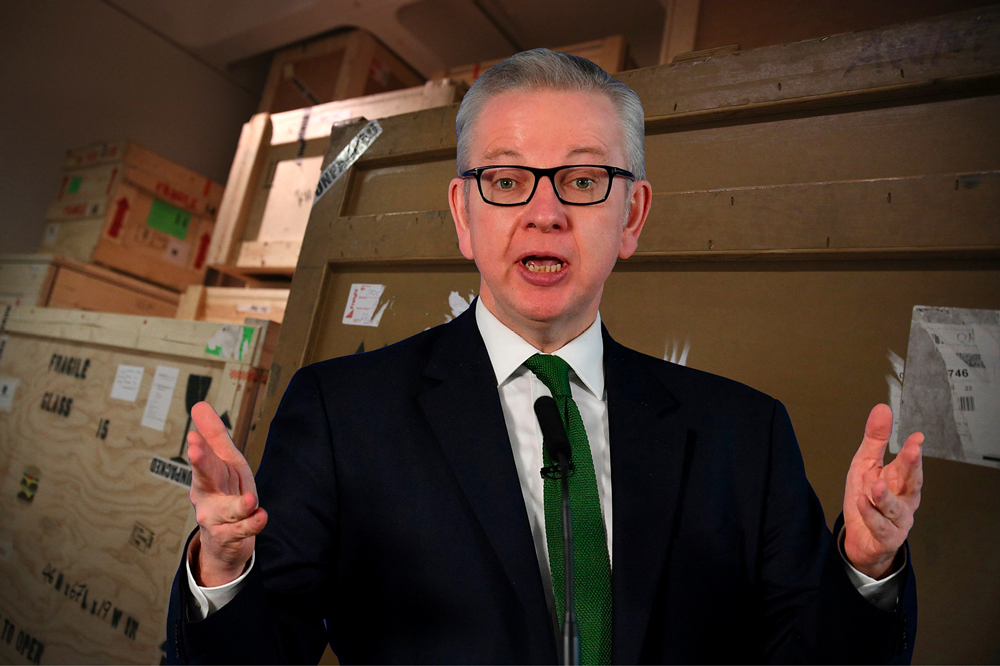Coming out of lockdown in December, art dealers would be forgiven for thinking that they might finally be able to get down to a bit of business. Well, not so fast. Christmas may be coming but so is Brexit – or, more accurately, the end of the Brexit transition period on 31 December 2020. The UK and the European Union have until this date to agree a trade deal. If there is no deal, border checks and taxes will be introduced for goods travelling between the UK and the EU. However, deal or no deal, we will still see changes. But how should art businesses prepare if we do not yet know the shape of things to come?
DCMS recently published guidance on the matters the art market should attend to in preparation for the end of the transition period. Michael Gove said on 1 December that ‘A lot of what businesses need to do is the same whether or not we get a free trade agreement or not. There’s no harm in doing these things because they’ll be necessary come what may.’ However, shadow minister Rachel Reeves commented that ‘the government is putting the burden on businesses to prepare for the end of the transition period when it has not explained what it is those businesses are getting ready for’.
Both comments resonated with me as I grappled with the DCMS guidance earlier this week, with a view to drawing out some discrete practical matters that art businesses can focus on in order to prepare for 1 January 2021 in relation to the movement of goods. I do not attempt to cover the topic of movement of goods comprehensively – or indeed the myriad other matters that may be relevant to art businesses; DCMS also refers us to a more general Transition Self-Checker website for all businesses and citizens. Employment and visa-related matters, data protection regulations, e-commerce and business travel in the European Economic Area, and changes to the UK sanctions regime are just some of the things that will need to be reconsidered post-Brexit.
From 1 January 2021, UK businesses will need to make customs declarations when they import goods from the EU or export goods to the EU. This is much like how goods from the rest of the world have been treated to date. Although art galleries typically use specialist art shippers to ship works and deal with customs declarations (and indeed HM Government encourages businesses to appoint a customs intermediary to deal with the paperwork), UK businesses should be aware that they will need an EORI (Economic Operator Registration and Identification) number that starts with ‘GB’ to import goods from the new year. Applications should be made immediately as it could take up to a week to be issued. UK traders may also need an EU EORI number if their business will be making customs declarations or getting a customs decision in the EU.
Any EU business importing goods such as art from a UK business will also need to prepare for 1 January 2021. DCMS advises UK businesses that, before exporting goods to that EU business, they should ensure the EU importer can make the necessary customs declarations (and obtain any necessary licence or certificate required for the artworks being imported into the EU). DCMS also encourages businesses to find out if they will be able to charge VAT at 0 per cent on exports to the EU using a checker.
UK businesses must now prepare to pay or account for import VAT on all imported goods. Currently, once imported into the EU, art, antiques and collectible items can move freely around the EU without further import VAT. (The UK has often been seen as the gateway to the EU art market as it has had the lowest rate of import VAT for art, antiques and collectibles.) From 1 January customs duties and VAT must be paid on all imports; including from the EU. Rates can be checked here. Traders who import goods regularly may benefit from having a duty deferment account. This enables customs charges including customs duty, excise duty, and import VAT to be paid once a month through direct debit instead of being paid on individual consignments. The guidance does not explicitly refer to procedure on the temporary admission of goods, for example if a dealer with galleries in London and Paris moves an artwork between countries.
When exporting items of cultural interest from the UK that reach or exceed specific age and monetary value thresholds, there are currently two separate export licensing regimes. A UK licence is required for removal to another EU country, and an EU licence is required if the artwork is exported to a non-EU country. From 1 January 2021, UK exporters of items of cultural interest will need a UK licence to export cultural objects from the UK to any destination, and will no longer need to apply for the EU licence. EU licences issued before 1 January 2021 will be valid for export at UK borders after exit day (the validity period for standard EU export licences is limited to 12 months). If importing objects of cultural interest from the EU into the UK, UK importers will of course need to comply with the export licensing regimes of the EU and individual EU countries.
A wise man (or woman) once said that ‘today’s preparation determines tomorrow’s achievement’. As the trade deal talks continue in London this week, frustratingly some aspects of our separation from the EU do remain undetermined. However, there are matters that art businesses can deal with now to prepare for the end of the transition period. Beyond that, may December bring plentiful sales and goodwill to all art dealers.
Sarah Barker is a Partner and Head of the Art Group at law firm Lee & Thompson LLP
This article does not constitute legal advice and should not be relied upon. If you require legal advice in relation to any of the issues raised in this article, then specific legal advice should be sought on a case by case basis.



